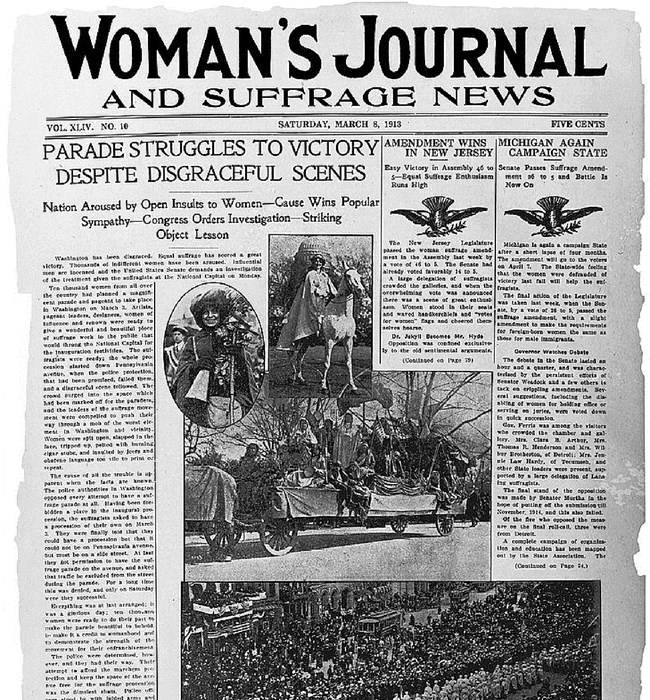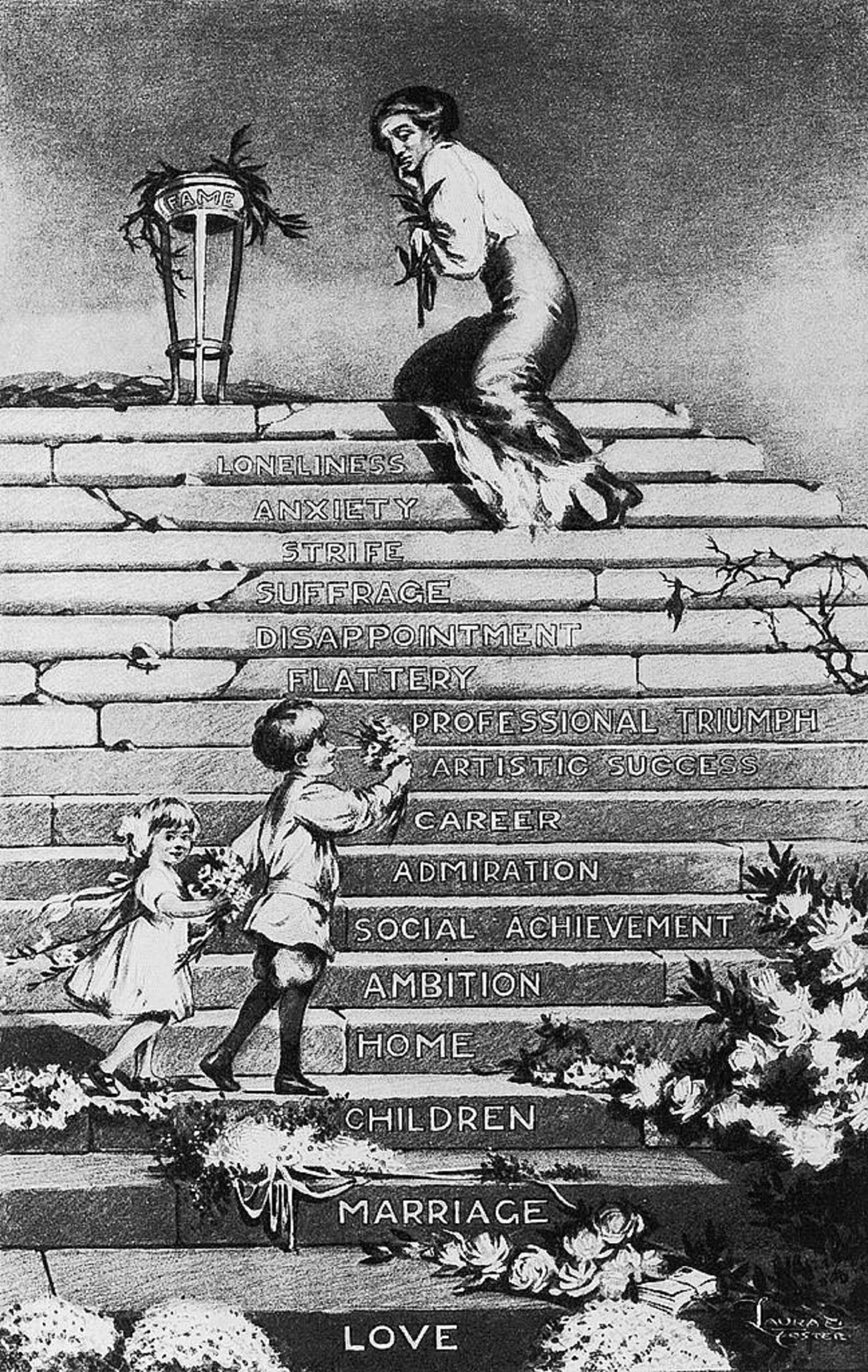Part of a series of articles titled Essays: Overview of Women's Suffrage .
Previous: Ratification: Women's Suffrage
Article

Courtesy of the Library of Congress. Part of "American Women: A Gateway to Library of Congress Resources" collection. Public domain.
Before Instagram, Snapchat, or Reddit there were newspapers! In the early 1900s, newspapers were the main form of media. As published articles often reflected national and local opinions, reporting had the power to influence policy-making.
During the women’s suffrage movement, papers all across the country were printing articles and cartoons for and against women’s suffrage rights. By examining these articles and cartoons, we can better understand different opinions about the movement.
Examine the cartoon below.
What types of people does the cartoon show? Are these people depicted in a flattering way or not? How do you know?
What symbols, values, or traits is the cartoonist emphasizing? What point is the cartoon trying to make?
Do you think this cartoon was drawn by someone who as for or against women’s suffrage? Why?
What influence do you think cartoons have in the present day?

From the collections of the Library of Congress (https://www.loc.gov/item/2002716765/).
Part of a series of articles titled Essays: Overview of Women's Suffrage .
Previous: Ratification: Women's Suffrage
Last updated: August 15, 2019